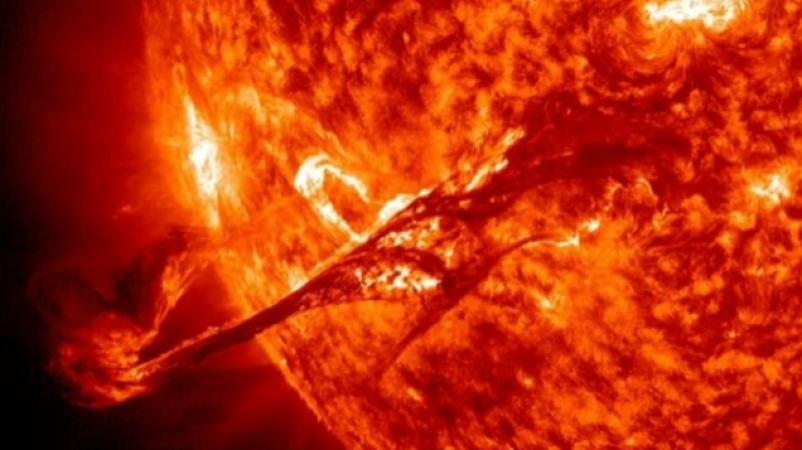
USA: Although the Sun has always been a constant and important aspect of our lives, many things about it continue to elude us. Now, even by Sun's standards, it has done something odd. Over the solar north pole, a sizable fragment of our star broke off and produced what appears to be a tornado-like vortex. The phenomenon has left scientists in a state of shock.
Solar Dynamics Observatory of the National Aeronautics and Space Administration recorded the event, and space weather forecaster Dr. Tamitha Skov tweeted about it. But since the Sun experiences activity cycles roughly every 11 years, this is of no concern.
During this time, it goes from being comparatively calm to being completely uncontrollable. To fully comprehend the recent event, more research is needed.
Also Read:
Variations in the magnetic field of the Sun cause solar cycles. When the polarity of the magnetic field of the Sun is reversed, the Sun is at its most active or solar maximum. The current Sun cycle, which started in December 2019, has gone above and beyond expectations.
Inexplicably, our star has been active. And this cycle's solar maximum has not yet been reached.
The current phenomenon, according to scientists, started with a solar prominence, which is a sizable, bright filament of plasma that extends from the Sun. A "hedgerow prominence" is the name given to this particular prominence. Every 11 years, it always appears at latitude 55 degrees around the Sun's crown.
Even though they are aware of its schedule, scientists are still unsure of what drives it.
What makes this time different if it happens every 11 years? The fact that a fragment of the prominence broke off and travelled for over eight hours at a speed of about 96 km/h while circling the solar pole at 60 degrees latitude stunned everyone. A solar physicist at the US National Center for Atmospheric Research named Scott McIntosh said he had never witnessed anything like it.
At the Sun's latitude of 55 degrees, according to McIntosh, an odd event occurs every year. Dr. Skov expressed a similar viewpoint about the phenomenon in a tweet. However, because scientists haven't been able to observe this area directly, their ability to comprehend what happens there is diminished.
The ecliptic plane—the plane in which planets orbit—is the only place from which we can observe the sun, according to McIntosh.